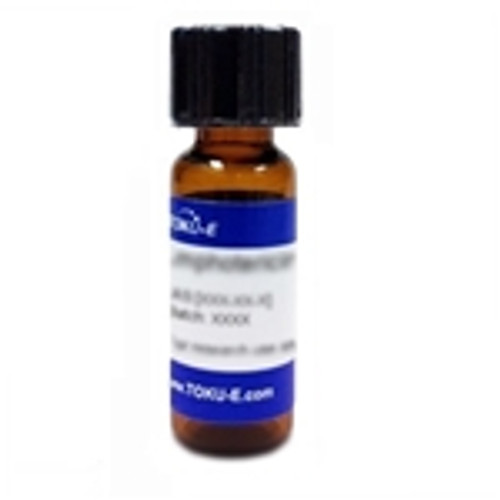Micafungin is a semi-synthetic cyclic lipopeptide antifungal belonging to the echinocandin class that was reported in 1999 from Fujisawa in Japan. Unlike other marketed semi-synthetic derivatives in this class, Micafungin is derived from FR901379, which contains a phenolic sulfate to enhance aqueous solubility, a serious limitation in the echinocandin class.
Micafungin is soluble in ethanol, methanol, DMF or DMSO. It has moderate water solubility.
We also offer:
- Micafungin Sodium (M035)
| Mechanism of Action | Micafungin inhibits the synthesis of β-(1,3)-D-glucan, an essential component of the cell wall of susceptible fungi. |
| Molecular Formula | C56H71N9O23S |
| Microbiology Applications |
Micafungin is used for Candida causing candidemia, acute disseminated candidiasis. It can also be used against Aspergillus and has been used in combination for aspergillosis studies. Broth dilution (BD) is a reference method for mold antifungal-susceptibility testing. It involves serial two-fold dilutions of the antifungal in liquid medium inoculated with a standardized number of condia and incubated for a set period of time. Clinical interpretive breakpoints (CBPs) for in vitro mold-susceptibility testing have not been established. However, epidemiological-cutoff values (ECVs) can be used, defined as an MIC cut-off value that discriminates wild-type (WT) isolates from non-WT strains. ECVs and WT MIC distributions are available for Aspergillus spp. and may help in detecting drug resistance (Powers-Fletcher et al, 2016). Disk diffusion testing of Candida spp. is available from CLSI which provides zone diameters and interpretative criteria for common Candida spp. exposed to Micafungin (Wayne et al, 2022). Echinocandins allow molds to germinate but inhibit growth at the tip of the emerging hyphae. This appears in culture microwell plates as compact, round “rosette” forms instead of extended hyphal growth. The lowest drug concentration that alters growth in this manner is referred to as the minimum effective concentration (MEC). Differences in methods between CLSI and EUCAST standards may impact MIC or MEC determination. Differences include glucose concentration, well shape, inoculum concentration and EUCAST has validated spectrometer readings for A. fumigatus. In vitro activity of Micafungin against Candida spp. biofilms at different states of maturation (2, 6 and 24 h). Clinical isolates (N=78) growing as planktonic or sessile cells via broth microdilution methods were evaluated. Findings confirm that Micafungin has high potential anti-Candida-biofilm activity but this effect does not comprise all Candida species and strains. When growing as planktonic cells, strains were susceptible or intermediate. However, for biofilms, Micafungin displays species- and strain-specific activity and the strongest antibiofilm activity is observed at early stages of biofilm formation (Prażyńska et al, 2018). |
| References |
Prażyńska M, Bogiel T and Gospodarek-Komkowska E (2018) In vitro activity of Micafungin against biofilms of Candida albicans, Candida glabrata, and Candida parapsilosis at different stages of maturation. Folia Microbiol 63:209–216 Tawara S et al (2000) In vitro activities of a new lipopeptide antifungal agent, FK463, against a variety of clinically important fungi. Antimicrob. Agents Chemother. 44:57 Tomishima M et al (1999) FK463, a novel water-soluble echinocandin lipopeptide: Synthesis and antifungal activity. J. Antibiot. 52:674 Wayne PA (2022) Clinical and Laboratory Standards Institute. Performance standards for antifungal susceptibility testing of yeasts. 3rd ed. CLSI supplement M27M44S. Vehreschild J and Cornely AO (2006) Micafungin Sodium, the second of the echinocandin class of antifungals: Theory and practice. Future Microbiol. 1(2): 161–170 |




